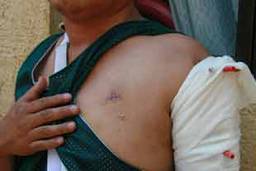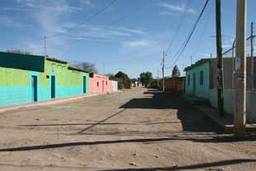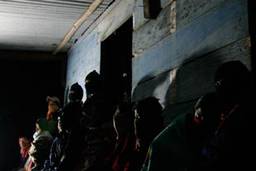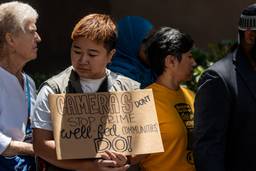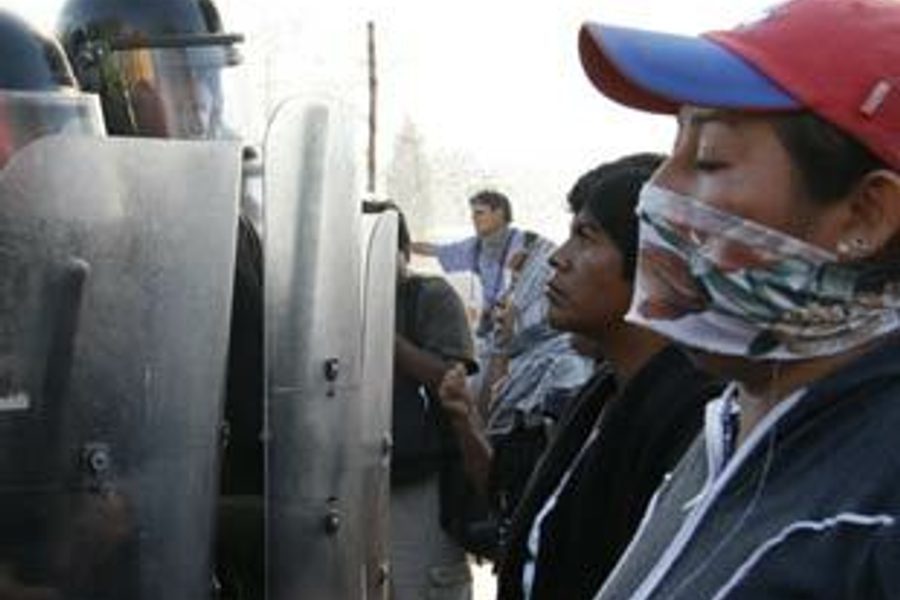
At 8 a.m. on November 2, police came to remove the last barricade. After clearing away the rubble and city buses used to block the major Cinco Señores intersection, several hundred riot police and special forces from the Federal Preventive Police (PFP) took positions along University Avenue on either side of the Autonomous State University of Oaxaca. Two groups of police forces armed with submachine guns, tear gas grenades, riot shields and batons prepared to advance, with military helicopters circling overhead and anti-riot tanks gunning their motors behind. Only the charred skeleton of an old bus, stretched across University Avenue halfway between the two police lines, remained.
The commander of the federal police, who would not give his name, said that they had no intention of invading the university campus, home to the occupied radio station that protesters from the Oaxaca Peoples’ Popular Assembly (APPO) had used for months to coordinate their civil disobedience uprising against Governor Ulises Ruíz Ortíz. “They are in their house,” the commander said, “and we did not come here to kick them out.”
The students saw otherwise.
Soon, residents from surrounding neighborhoods trickled into the streets to stand before the lines of riot police, talking, pleading and screaming at them not to advance, not to attack the university. The crowd swelled and by 10 a.m., students began to leap over the campus walls and join in, carrying junked cars, old tires and fallen telephone poles to build a new barricade only 10 feet from the federal police, and then set it on fire. The students shouted at the police, waving their sticks, rocks, slingshots and Molotov cocktails in the air.
Then one of the helicopters overhead fired tear gas grenades inside the campus, and the students unleashed a torrential volley of rocks and bottles. To the west, a morning soccer game froze in mid-play before both teams and the referees ran to gather rocks and join the defense.
It would take four hours, with thousands of students and nearby residents waging the fight, before the PFP finally retreated at 3 p.m. and the barricade of Cinco Señores was rebuilt.
The confrontation was the first open battle with police since teachers and local residents defeated state riot police in their pre-dawn raid on the striking teachers’ encampment on June 14. Created to support the teachers’ union after June’s failed police raid, the APPO had responded to armed paramilitary attacks only by organizing barricades – thousands of barricades – across Oaxaca City every night. When the PFP entered Oaxaca on October 29, the APPO called on protesters to turn and march with the police into the city rather than confront them. But state police in unmarked cars began a terror campaign, shooting, abducting, and brutally torturing university students and barricade volunteers in broad daylight.
The resulting rage catalyzed with the euphoria of victory on November 2, creating an urge for more battle. During a massive march on November 5, APPO organizers formed human chains in front of the police to keep protesters from throwing rocks or Molotov cocktails. But on November 20, after yet another, smaller march to commemorate the Mexican Revolution, four masked men threw rocks at the police lines outside of the town square. The police responded with tear gas and began to advance on the protesters, who retreated several blocks. After three hours of fighting, the APPO – blaming agitators for throwing the first rocks – gave the order to retreat and prepare a November 25 action.
The plan was to lead another massive march into the city center and peacefully surround the PFP – at a distance of a full city block – keeping them trapped in the town square for 48 hours. But the plan did not hold. When PFP agents stole a protester’s cooler of soda, young and enraged APPO members responded by throwing rocks and firing bottle rockets through plastic tubes.
The battle lasted for three hours and ended with the PFP using full force – tear gas, riot tanks, machine gun fire – to drive the protesters out of the center and surround them, beating and detaining over 140 people. That night, federal and state police pulled wounded protesters out of hospitals at gun point, raided houses and patrolled the city in convoys of pickup trucks carrying special forces officers. The campaign stretched over a week, forcing movement leaders and participants alike into hiding.
But on December 10, more than 10,000 members of the APPO reemerged to march in Oaxaca City, demanding Ruíz’s ouster and an end to the repression of the movement.
“People are moving beyond the fear,” says Fernando Soberanes, an indigenous teacher and member of the APPO who has participated in the movement from day one. “We are returning to the streets.”


